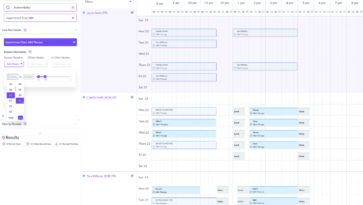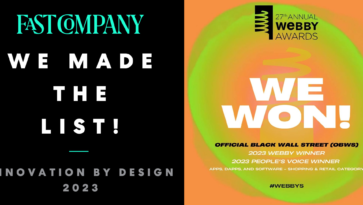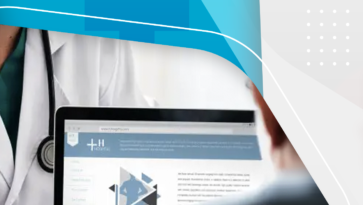
Securing funding and fueling the fire of a scale-up with newly raised capital are rites of passage for every entrepreneur. It takes the company from “two dudes in a garage” to a legitimate business. For founders that are serious about building a high-growth business with a digital product at its core, upfront investment into the process of creating this first product is a necessary step. If done correctly, the MVP will be your most valuable learning tool and growth asset – a critical stepping stone on the path to profitability. This article is meant to be a 4 step guide to raising institutional capital with a “Minimum Lovable Product”.
In my experience working with pre-seed startups, I’ve come to see Minimum Viable Product (MVP) expectations on a spectrum. On one end is what you see when you open up Uber or Airbnb on your phone: highly functional, carefully refined monetization strategy, and beautiful design. On the other end is a product built so cost-effectively, so narrowly focused, that the product will need to be completely rebuilt for the company to scale properly. In reality, there’s a delicate balance between the right amount of functionality and how much it costs to prove a concept. The startup world tends to throw around the acronym “MVP” without much idea for what it actually means. Yes, minimum viable product is what it stands for, but what does that entail?
Zoom out. In the world of 2020, both consumers and investors have almost limitless access to digital products they can choose from. Roughly 90% of startups fail. Countless variables contribute to that statistic, but from a product standpoint, the difference between potential success and an automatic failure is often as simple as creating a platform that a small group of people absolutely love versus one that a lot of people kind-of like. Gaining users is important. Retaining users is key. That’s why when we work with startups at this stage, we create what we call a Minimum Loveable Product. The MLP strategy is designed to use your available resources in the most efficient way possible to achieve an output that users love, not kind-of like.
So when we open a dialogue with startup founders looking to build their MVP, it’s essential for us to understand the business model, go-to-market strategy (GTM), partnerships, and long-term vision. We strongly advise founders to study the history and growth of similar companies as a comparison to their valuation and growth opportunity. When the goal is to raise a round of VC funding, we tell them to focus their attention on 4 key activities: Learn, Validate, Test, and Raise.
1. Learn
For the founding team, the most important aspect of the process is the ability to learn and react. Here are a few of the main areas to focus on:
- Your strategy: For first time founders, especially those coming from non-technical backgrounds, this is an opportunity to improve your overall business strategy. Your MLP provides a glimpse into the future of what your company is in for down the line. If you’re able to disprove your original hypothesis, you’ll be able to quickly re-allocate time and resources in other areas that’ll help get your company off the ground. There are operational deficiencies that are inevitably occurring on the inside, but building your MLP allows you to refine your strategy based on what the market tells you.
- Your user base: The startups that find product-market fit and ultimately succeed are the ones that listen to what their users actually want. The user is king. Who are you targeting and why? Releasing the product in a controlled environment allows you to collect both qualitative and quantitative data. Listen to your audience and move quickly to iterate. At Sidebench, we source real members of the hypothesized core demographic for user interviews prior to deciding on specific features or even starting design.
- Your team: This process gives founders a perfect opportunity to uncover the strengths and weaknesses of each individual on your team. Take advantage of those learnings, and even rearrange your team in a way that gets you the most out of each person if you can. Getting this right early on can be the difference between a successful fundraise and being dismissed by a VC.
Ultimately, your goal here is to focus on building the intangible assurances that your strategy and your team are best situated for your company’s success. On the bright side, the painful process of working through the MLP can make VCs think twice about your team being inexperienced.
2. Validate
The App Store and Google Play Store grow at a rate of 280,000 new apps every month, and the majority leave users disinterested and investors dissatisfied. We see it all the time at Sidebench. You need to actively work to find answers to the following questions: Does anyone need what you’re creating? Who will use it? And most importantly, will anybody pay for it? Customer validation is critical, and to succeed, you need to track metrics and KPIs that will lead you to actionable insights. Where are your users coming from? Which channels are driving the most traffic to your product: Paid Search? Social Media? Referrals? Or another form of digital marketing? What are the differences in user demographics between the places you are getting traffic from and where you aren’t getting traffic from?
At Sidebench, we tackle the validation of product/market fit in our Discovery Phase. We constantly test our designs and user journey concepts with real end users during interviews. This allows us to challenge assumptions, collect feedback, and iterate on our designs. Having this information upfront can ultimately save valuable time and resources.
And remember, don’t just trust the quantitative metrics. Stay in touch with your audience. It’s always better when something is introduced to you by a friend than a cheap Instagram ad. Analyze every piece of user feedback you receive.
*Each product is different, but here’s a list of commonly tracked mobile app KPIs:
- Daily Active Users
- Average Session Length
- Session Intervals
- App Store Rating
- Utilization of Features
- Number of Interactions (Shares, Posts, Comments & Likes)
- Conversion Rate (if applicable)
3. Test
Testing is another critical aspect of your MLP process. In order to test how your product is performing, you first need to decide what questions you’re trying to use data to answer. Once you know the underlying analytical needs, there are different methods and tools you can implement to pull the insights you need from your platform. A common and effective method of testing an MLP is A/B testing. It’s important to have a couple versions of design or copy – the differences don’t have to be major – for you to test. Some of your users will see Version A and the rest see Version B, and that allows you to monitor their interactions to determine which one performs best. A/B testing offers statistical data that helps to determine which app version leads to higher conversions. You can then use the actual data to make changes to the app and assess the impact of those changes with statistical confidence.
Apart from A/B testing, Google Analytics tracks and reports website traffic. Mixpanel tracks user interactions with web and mobile applications, and measures user engagement and retention. Hotjar can help you create heatmaps, which provide visual representation of clicks, taps, and scrolling behavior. There are many ways to continuously test your product to inform future iterations and improvements.
4. Finally: Raise
If you’ve accomplished the steps above, you should feel confident walking into a Venture Capital firm with your pitch deck in hand. This is our take on how your MLP can be an asset and position you for success. Is it the only way? No. But in our experience, the combination of a strong team, proof of concept, and market traction has proved to be successful time and time again and will be a starting point that most venture capitalists can appreciate.







